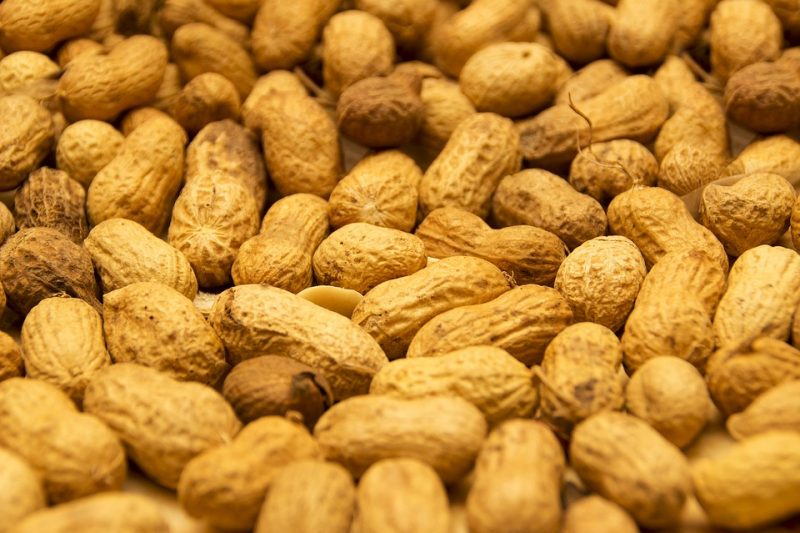
Graphene is a very amazing material for its unique gapless conical band structure, its efficient wide range of light absorption, its high mechanical strength, flexibility, thermal conductivity, and stability. [1-3] The study of graphene is a central interest across a diverse range of fields, such as photocatalysis, electrical conductivity, adsorption, and many other aspects.
However, the irreversible agglomeration or restacking of graphene sheets severely suppresses the intrinsically high conductivity and mechanical strength of individual graphene sheets and diminishes its accessible surface area. [4]
To avoid the re-stacking of individual graphene sheets, one effective method is to engineer a graphene material in which three-dimensional (3D) networks are formed by bonding graphene/graphene oxide (GO) sheets together. In order to construct 3D graphene materials with high mechanical strength and other properties, additives are needed, for example, polyaniline. [5] Although additives help construct 3D graphene materials, they introduce some significant problems of their own, including toxicity, cost, and so forth. The quest for nontoxic and low-cost additives continues to be a great impetus to research efforts to develop high-performance 3D graphene materials.
Peanut is an important crop that is a worldwide cultivation and brings large economic benefit with considerable quantities of peanut hull. [6] However, peanut hull without appropriate disposal has caused serious waste problems and sizable economic losses. Peanut hull is environmentally friendly and cheap, containing cellulose and lignin, which can be used as additives to obtain 3D graphene materials in previous studies. Therefore, the working group around Prof. Dr. Qinyan Yue at Shandong University (China) put forward an idea that peanut hull could be used as reinforcement bars and graphene sheets for walls to build high mechanical strength buildings, 3D graphene monoliths, thereby realizing the utilization of peanut hull.
The authors present a very simple, green and low-cost approach for the fabricating 3D self-assembled peanut hull/graphene aerogels (3D-PG), successfully achieved a base-induced, one-step synthesis of 3D-PG for oil-water separation. In addition, peanut hull powder and three-dimensional self-assembled superhydrophobic graphene aerogels (3D-G) without the aid of powdered peanut hull were also tested as the indicator.
The optimum preparation conditions were first investigated. Effects of reaction time, temperature, and the ratio of peanut hull to graphene oxide were first studied. The authors found that under no circumstances could the peanut hull powder form the blocks. Meanwhile, 3D-G were more fragile than 3D-PG prepared in the same reaction time and at the same temperature. A 9.6 mg 3D-PG could support a 200 g weight, while a 13.4 mg 3D-G broke due to supporting a 200 g weight, indicating that peanut hull and graphene sheets are mutually improved in mechanical strength.
In the subsequent study, the authors determined the physicochemical properties of 3D-PG, 3D-G, and peanut hull powder. Results showed that a water droplet or an oil droplet spread out once it touched to the surface of 3D-G. Nevertheless, the external surface of 3D-PG was found to be water resistant and oil receptive. The water drop on the surface of 3D-PG could keep unchanged within 10 min. Such outstanding oleophilic properties make the 3D-PG tremendously potential applications for oil absorbing and oil-water separation. Therefore, the authors conducted the oil and organic solvent adsorption experiments.
3D-PG have high adsorption capacities for various oils and organic solvents, ranging from 32.14 g/g to 79.33 g/g, far exceeding 3D-G. Noteworthily, the adsorption equilibrium can be achieved within 1 min. What’s more, oils were recycled with a recovery of about 90% after ten cycles. In addition, an interesting dynamic test was also conducted. The bean oil floating on water was dyed with methyl red and collected continuously by a peristaltic pump, and the 3D-PG was designed as a filter to separate oil and water. After 10 min, the floating oil was nearly moved from the left beaker to the right beaker and water in two beakers kept unchanged, which suggested that 3D-PG as a smart filter only selectively absorbed oil without absorbing water.
These findings are described in the article entitled One-step synthesis of peanut hull/graphene aerogel for highly efficient oil-water separation, recently published in the Journal of Cleaner Production. This work was conducted by Nan Li, Qinyan Yue, Baoyu Gao, Xing Xu, Ruidian Su and Bingjie yu from Shandong University.
References:
- J. Luo, J. Lai, N. Zhang, Y. Liu, R. Liu, X. Liu, Tannic Acid Induced Self-Assembly of Three-Dimensional Graphene with Good Adsorption and Antibacterial Properties, ACS Sustainable Chem. Eng. 4 (2016) 1404-1413.
- R. Nasiri, N. Arsalani, Synthesis and application of 3D graphene nanocomposite for the removal of cationic dyes from aqueous solutions: Response surface methodology design, J. Cleaner Prod. 190 (2018) 63-71.
- R.P. Ren, W. Li, Y.K. Lv, A Robust, Superhydrophobic Graphene Aerogel as a Recyclable Sorbent for Oils and Organic Solvents at Various Temperatures, J. Colloid Interface Sci. 500 (2017) 63-68.
- Y. Ma, Y. Chen, Three-dimensional graphene networks: synthesis, properties and applications, Natl. Sci. Rev. 2 (2015) 40-53.
- C. Sha, B. Lu, H. Mao, J. Cheng, X. Pan, J. Lu, Z. Ye, 3D ternary nanocomposites of molybdenum disulfide/polyaniline/reduced graphene oxide aerogel for high performance supercapacitors, Carbon 99 (2016) 26-34.
- J. Liu, Z. Wang, H. Li, C. Hu, P. Raymer, Q. Huang, Effect of solid state fermentation of peanut shell on its dye adsorption performance, Bioresour. Technol. 249 (2018) 307-314.








